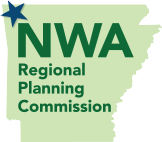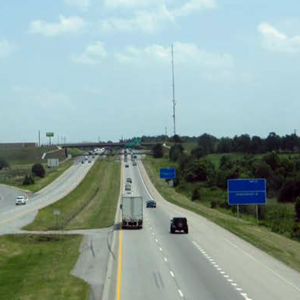Transportation
Forecasting Travel Demand
Northwest Arkansas Travel Demand Model Update (2024)
The Northwest Arkansas Regional Planning Commission (NWARPC) has initiated a comprehensive update to its Travel Demand Model (TDM) in partnership with WSP consultants. This update will support data-driven decision-making for future transportation investments across highway and transit infrastructure. It will also be a critical tool in developing the Forward2050 Metropolitan Transportation Plan (MTP).
Key Objectives:
-
Update the regional TDM to reflect current travel patterns and forecast future needs.
-
Support the development of a fiscally constrained project list—projects expected to be funded with federal aid through 2050, based on funding estimates from ARDOT and MoDOT.
-
Examine alternative transit improvements for better connectivity among Bentonville, Rogers, Lowell, Springdale, Johnson, and Fayetteville through a Transit Alternative Study (TAS). This study will assess fixed rail, bus rapid transit, and light rail options.
2050 Forecast and Scenarios:
-
The model will forecast transportation needs for future forecast years 2030, 2040 and 2050 and evaluate three land-use growth scenarios for the 2050 scenario:
-
Suburban Growth
-
Planned Growth
-
Urban Growth
-
-
A fiscally unconstrained project list will also be developed, including projects beyond current funding projections.
Background and Model Development History
-
2004: Initial TDM developed for Washington and Benton Counties using a 2005 base year, with future scenarios for 2010, 2030, and 2035.
-
2007–2010: Model maintained and used for prioritization, land use, and the 2035 Regional Transportation Plan.
-
2010: Western Beltway Corridor Study included an expanded model area to include the planning area in McDonald County, MO, and improved model structure/code.
-
2012: Model update as part of the Transit Alternatives Analysis funded by FTA, using the model to evaluate major transit investments and their potential ridership.
-
2014: Major model upgrade by Parsons Brinckerhoff:
-
Added mode choice component for transit modeling.
-
Updated base year to 2010 and extended forecasts to 2020, 2030, and 2040.
-
Improved GISDK code and added special generators for key travel generators.
-
-
2019–2020: Updated base year to 2018 and added forecasts for 2025, 2035, and 2045.
-
WSP enhanced the mode choice model with better transit route coding and validation using the 2018 system-wide origin-destination survey.
-
Improved calibration and sensitivity testing for more accurate forecasting. Here are the current model report and an interactive map of the model results for all scenarios can be found here.
-
Role of the Northwest Arkansas Travel Demand Model:
The TDM helps planners, engineers, and agencies forecast traffic, identify future transportation system needs, and assess the impacts of different land-use and transportation policies. It uses inputs like land use, demographics, and socioeconomic factors to simulate how people and vehicles move throughout the region.

